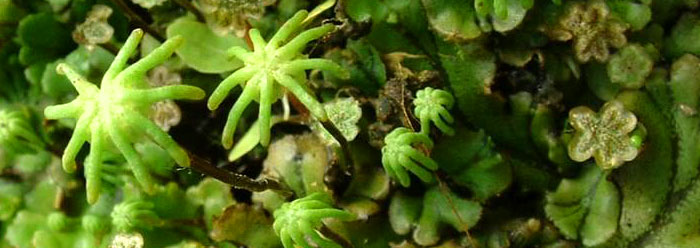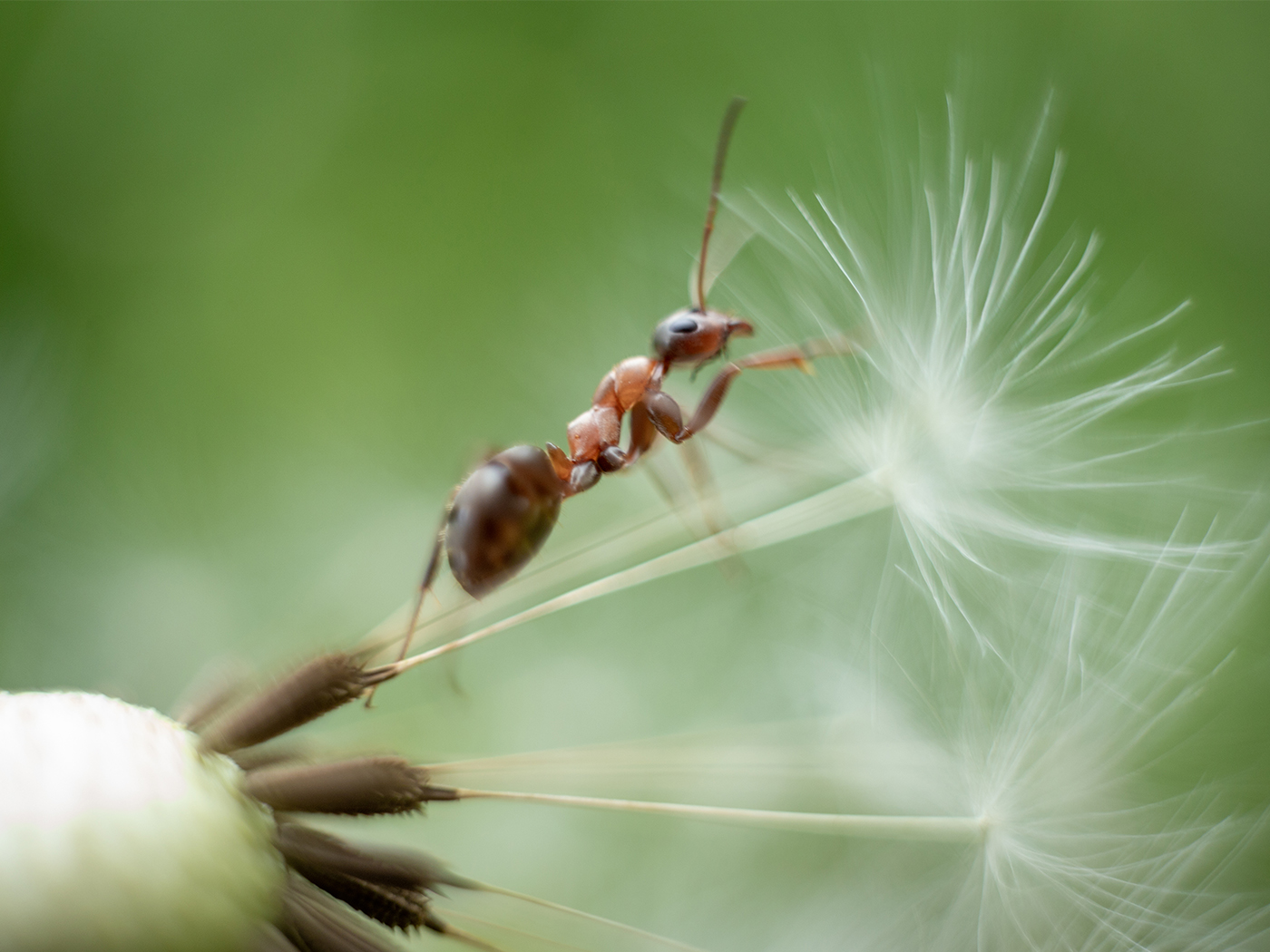In the mid-1800s, a mysterious new fossil, Prototaxites, was described. The large, tree-trunk-shaped fossils were found in some of the lowermost fossil-bearing rock layers. To date, researchers have been unable to say exactly what they are, whether the remains of an ancient conifer tree, a strangely huge fungus, giant marine alga, or a unique and extinct plant. A new study claims that they are the remains of rolled-up mats of a liverwort plant interwoven with fungus cells, a conclusion that is remarkably consistent with the creation model.
Liverworts grow in cool, damp environments, but they do not grow tall because they have no vessels to transport sap. Instead, nutrients are traded directly from cell to cell. What force could have rolled up a plant mat, and what process would transform soft plant material into hard fossils?
These odd fossils appear to have layers that in cross-section resemble concentric tree rings. But under the microscope, the fine structure is not tree-like, instead having tiny, sometimes intertwined hollow tube structures. In a report published in the American Journal of Botany, University of Wisconsin botanist Linda Graham and her colleagues presented various arguments in support of their interpretation that Prototaxites are rolled-up liverwort mats.1
The researchers experimented by rolling up living liverwort mats, and they found these had many features in common with the fossils. They also observed that other liverwort fossils are found in Ordovician rocks, and that modern liverworts can form a mat extending over several acres. Overall, the “structural and physiological studies revealed strong similarities between the fossil Protaxites and the modern liverwort Marchantia.”1
Modern Marchantia liverworts can live in association with a certain fungus. Together, the two organisms share resources. The liverwort captures sunlight energy, and the surplus can be shared with the fungus. Alternatively, chemical energy can be absorbed from a watery environment below. Thus, the plant is said to be “mixotrophic,” able to obtain energy from a variety of sources. These capabilities point to brilliant and creative engineering.
If the researchers have correctly identified the source organism of these long-enigmatic fossils, several questions arise. First, if liverworts evolved, why do they appear suddenly and fully formed in the fossil record, complete with photosynthetic apparatuses and a well-orchestrated partnership with a completely different organism? Why is there no clear evidence of gradual transition from a “lower” life form to liverworts? It appears that they were well-designed in this form right from the start and have reproduced after their own kind ever since.
Also, if the Silurian strata in which the lowest Prototaxites fossils are found were formed 420 million years ago, then why are the fossils still recognizable as relatives of common modern-day Marchantia liverwort plants? It appears, scientifically speaking, that they have experienced very little if any effects of mutation, selection, or any other proposed evolutionary mechanism.
The current study found that the living and fossil plant forms had small and thin rhizoids (slender, rootlike filaments), larger and thick-walled rhizoids, certain wavy-walled rhizoids, associated cyanobacterial filaments, appropriate dimensions for Prototaxites “rings” consistent with the various thicknesses of liverwort mats, and the odd inclusion of totally different plant parts within the fossils―corresponding to plants that perhaps were caught in the mat as it was rolled up.
Finally, what kind of process could have rolled liverwort mats into massive 28-foot-long sections with over a 4-foot diameter? The authors suggested this was accomplished “by wind, gravity, or water.”1 Of the three, water would carry by far the most force. And considering that wind and gravity do not roll up modern liverwort mats—which are anchored to their substrates and to each other with many tough and tiny rhizoids—water would seem the most reasonable of the three potential causes.
The ancient liverwort mats must have been subjected to a catastrophic event in which water struck them with sufficient force to roll them into massive “trunks” and then almost immediately buried them under sediments that preserved their soft-plant structures. This is consistent with the creation interpretation of the Silurian and Devonian strata in which Prototaxites are found, which is that these rock layers represent deposited remains of the pre-Flood earth and oceans that occurred during the first stages of the Genesis Flood, when waters inundated the land.2 The fossil record continues to provide evidence for the accuracy of the biblical account.3
References
- Graham, L. E. et al. 2010. Structural, physiological, and stable carbon isotopic evidence that the enigmatic Paleozoic fossil Prototaxites formed from rolled liverwort mats. American Journal of Botany. 97 (2): 268-275.
- Snelling, A. A. 2009. Earth’s Catastrophic Past, Vol. 2. Dallas, TX: Institute for Creation Research, 740.
- Morris, J. 2010. The Real Nature of the Fossil Record. Acts & Facts. 39 (2): 12-14.
Image credit: J.F. Gaffard fr.Wikipedia
* Mr. Thomas is Science Writer at the Institute for Creation Research.
Article posted on March 8, 2010.
























